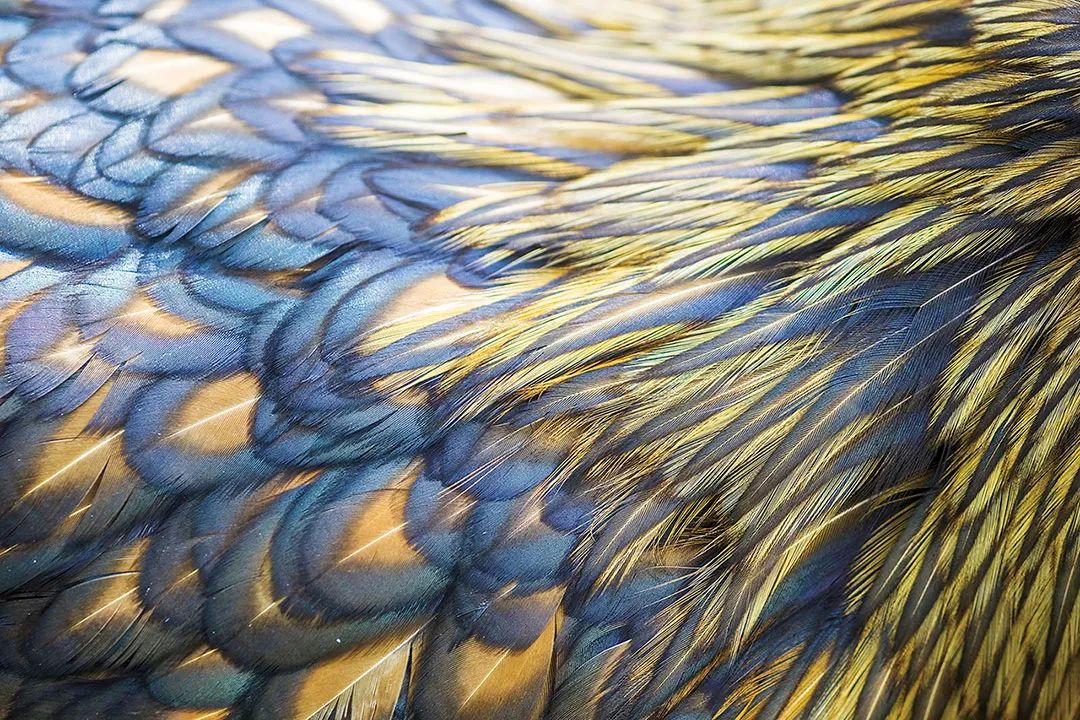《Science》年度最受欢迎图片!每一张都有一个故事!
点击上方“转化医学网”订阅我们!
干货 | 靠谱 | 实用
导 读
《Science》在今天选出了最受他们喜爱的图片。上图则是小转认为最好看的图片。大家可以在留言区回复数字告诉小转,哪一张图打动了你。
01
Howler monkeys give clues to yellow fever
Juan Carlos Munoz/NPL/Minden Pictures
A baby black-and-gold howler monkey held close by its mother. The howler monkey population can serve as an indicator of the spread of yellow fever. Brazil suffered from its largest outbreak in more than 70 years with 792 confirmed cases.
02
Seasons of the gut
PicturesMatthieu Paley/National Geographic Creative
In Tanzania, a Hadza gatherer holds out a piece of honeycomb. Scientists are learning how our seasonal diet can shape the bacteria in our intestines—collectively known as the microbiome—by comparing the guts of people like the Hadza to those who live in the industrialized world.
03
Where do feathers grow?
Bill Coster/FLPA/Minden Pictures
The feathers of a gold-laced orpington hen. A study published this year reveals how the body decides where to put feathers—or hair—on its skin.
04
Great migrations
© Massimo Sestini
African and Syrian migrants crossing the Mediterranean Sea. Humans are more mobile than ever before, creating challenges for local communities and the migrants themselves. Scientists are among those who are the most traveled and displaced.
05
Outbreak
John Moore/Getty Images
In Monrovia a mother holds her child standing on top of their mattress. Scientists are learning more about how local community involvement and inequalities in health systems can change the course of infectious diseases.
06
Surging glaciers
Juan Carlos Munoz/NPL/Minden PicturesHeïdi Sevestre
The Wahlenbergbreen glacier on the Svalbard archipelago in Norway moves up to 9 meters a day. Glacier mass and shape and climate change spark massive surges that shove walls of ice over lands, and even villages, in fatal and destructive events.
07
The March for Science
Bill Douthitt/AAAS
On 22 April, in the first ever March for Science, supporters of the scientific community took to the streets in more than 600 locations across the world. Even in the pouring rain, more than 100,000 participants turned out for the march in Washington, D.C.
08
© Frans Lanting
A collection of eggs from the Western Foundation of Vertebrate Zoology collection showing a variety of shapes, patterns, and colors. New research unravels the mystery of why bird eggs are shaped so differently.
09
A closer look at spiders
Tim Flach/Getty Images
A Goliath bird-eating spider (left) and brown recluse spider (right). In a special feature investigation, Science reporters dove into the world of spiders, revealing how they make their silk, where their venom comes from, and how this weird and wild group of arachnids evolved.
10
Crisis in Nigeria
Andrew Esiebo/AP Images for Science Magazine
Children play in a safe area at the Muna Garage camp in the state of Borno in Nigeria. Families fleeing from the militant group Boko Haram have suffered from severe malnutrition and infectious diseases such as measles, malaria, and polio, hitting children especially hard.
11
Juno trains its eye on Jupiter
NASA/SwRI/MSSS/JPL-Caltech/Betsy Asher Hall, Gervasio Robles, Candy Hansen, Koji Kuramura, Eric De Jong, Scott Bolton
Cyclones measuring more than 1000 kilometers across swirl around the south pole of Jupiter. It took NASA’s Juno spacecraft three different orbits to capture imagery like this.
12
Hope for cataracts
Paul Whitten/Science Source
A cataract clouding the lens of a human eye. About one in six Americans over the age of 40 develop cataracts, caused by clumping proteins. Researchers may have developed a new method of regenerating the lens from stem cells. The technique will be tested in clinical trials next year.
13
Robert Blanken
On Costa Rica’s Tárcoles River, an American crocodile sits in water. At night in the muddy banks, researchers have been catching crocodiles to determine their sex. They suspect a synthetic steroid has been causing them to switch sexes.
14
A tight squeeze
Karlsruhe Institute of Technology
The vacuum chamber of the Karlsruhe Tritium Neutrino device, designed to measure the mass of the elusive neutrino, clears the small town of Leopoldshafen, Germany, with only 5 centimeters to spare. The chamber traveled a long 8800 kilometers by sea from Deggendorf to Karlsruhe Institute of Technology in Germany.
15
PNAS
An alkali fly underwater in California’s Mono Lake. The fly’s hairs and waxy coat trap air to form a bubble—the only way it can survive in the otherwise inhospitable lake.
16
Boom!
D. Basualto, Southern Andes Volcano Observatory (OVDAS), Sernageomin, Chile
A violent volcanic eruption in Cordon Caulle, Chile. Explosions like this are helping scientists understand how and why volcanoes erupt.
对于这16张照片和背后的故事,哪一个获得了你的喜爱,欢迎在下方留言区告诉我们!
热文推荐:
饮食、脂肪、死亡率:《Science》年度最具争议研究,您还记得吗?
JAMA重磅!超143万人、18年研究证明运动可抗26种癌症!
《Science》首次明确结肠炎和IBD的慢性炎症性疾病发病起源!
《Lancet》超1000名儿童研究证实:校园干预措施减肥,无效!
难受!《Science》子刊揭示脱发竟是癌症转移的现象之一!
上海慧晨生物医学科技有限公司
识别图中二维码,点击关注
转载、投稿:汪先生
微信:wp4319
商务合作:张女士
微信:zhyxkf
上海市普陀区金沙江路1685号
END
转折点:生物医药第一招聘平台
识别图中二维码,了解详情
HiDNA优质好用的唾液采集器,独家专利
识别图中二维码,了解详情


























